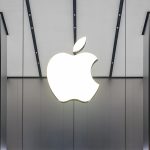
- Federal Reserve
- Monetary Policy
- S&P 500
Wall Street Rallies as Weak Jobs Data Signals Likely Fed Cut
6 minute read

Disappointing jobs report boosts stock market as investors anticipate Federal Reserve rate cuts to support economic growth
Key Takeaways
- Wall Street rallies over 1% across all major benchmarks as 10 of 11 S&P 500 sectors surge following weak July jobs data that increases September Fed rate cut probability to 85%.
- AI spending surge of 56% in 2025 expected from tech giants Meta, Microsoft, Amazon, and Apple as Morgan Stanley reports massive capital expenditure increases for cloud computing and AI infrastructure.
- $22.3 trillion AI impact by 2030 projected despite monetization gap, with only 3% of 1.7 billion global AI users paying for premium services while OpenAI captures 70% of consumer spending revenues.
Introduction
Wall Street experiences a strong recovery as all three major benchmarks rise over 1% in afternoon trading, driven by speculation about Federal Reserve rate cuts following disappointing jobs data. The broad-based rally sees 10 of the 11 S&P 500 sectors in positive territory, with only energy lagging due to declines in ExxonMobil and Chevron shares.
The market optimism centers on July’s weak payroll figures, which showed nonfarm payrolls rising by just 73,000 jobs versus expectations of 104,000. This disappointing data fuels investor hopes for monetary policy easing, particularly benefiting interest-rate-sensitive technology stocks positioned to capitalize on increased AI spending.
Key Developments
The July jobs report reveals significant labor market weakness, with downward revisions removing 258,000 jobs from prior months—the largest adjustment since 1979 outside the pandemic period. These disappointing figures contrast sharply with the Federal Open Market Committee’s previous assessment of solid labor market conditions when it held rates unchanged for a fifth consecutive meeting.
President Trump reignites controversy by claiming the Bureau of Labor Statistics jobs report is rigged, while his economic adviser Kevin Hassett addresses data transparency concerns. The weak employment data provides ammunition for those advocating monetary policy easing to support economic growth.
According to CNBC, Federal Reserve Chair Jerome Powell initially pushed back on September rate cut expectations, citing inflation concerns and potential tariff impacts. However, market sentiment shifted dramatically following the employment report release.

Market Impact
CME FedWatch data shows an 85% probability of a quarter-percentage point rate cut at the September 16-17 Federal Reserve meeting, up significantly from earlier assessments. This probability surge follows the dismal labor market update and represents a dramatic shift in monetary policy expectations.
Technology stocks lead the rally as investors anticipate lower borrowing costs will benefit high-growth sectors. The prospect of reduced interest rates makes future tech earnings more attractive in present-value terms, particularly for AI-focused companies with substantial capital requirements.
Treasury yields decline in the bond market as traders price in higher odds of monetary easing. The yield movements reflect growing confidence that the Federal Reserve will prioritize employment support over inflation concerns in its upcoming policy decisions.
Strategic Insights
Morgan Stanley reports major technology companies plan to increase capital expenditures by 56% in 2025 and 31% in 2026, driven by artificial intelligence infrastructure demands. Meta, Microsoft, Amazon, and Apple lead this investment surge, positioning themselves for the next phase of AI development and cloud computing expansion.
The artificial intelligence sector faces a significant monetization challenge despite widespread adoption. Over 1.7 billion global users have accessed AI services, with 61% of American adults using AI within the past six months, yet only 3% pay for premium services.
OpenAI dominates consumer AI spending, capturing 70% of the $12 billion market despite the technology’s broad user base. This concentration highlights the winner-take-most dynamics emerging in the AI sector, where first-movers and platform leaders command disproportionate revenue shares.
Expert Opinions and Data
Jim Cramer argues the lackluster jobs report should motivate Federal Reserve action, stating that September rate cuts would serve as a catalyst for technology stocks. He notes the market’s approval of substantial AI investment, viewing current spending as necessary for future returns.
Apple CEO Tim Cook outlines plans to expand AI capabilities significantly, hoping to improve offerings after previous underwhelming releases. The company joins other tech giants in aggressive AI investment strategies designed to capture emerging market opportunities.
IDC forecasts AI investments will generate a cumulative global impact of $22.3 trillion by 2030, representing approximately 3.7% of global GDP. The research firm projects every dollar spent on AI will generate an additional $4.90 in economic impact, demonstrating the technology’s substantial multiplier effect.
Industry analysts express optimism about ongoing AI spending surges, viewing them as drivers of operational efficiency and new revenue streams. However, some caution remains regarding slow monetization progress relative to user adoption rates, indicating business models must evolve to capture full economic potential.
Conclusion
The convergence of weak employment data and aggressive AI investment strategies creates a favorable environment for technology stocks, particularly as Federal Reserve rate cut probabilities increase. Major tech companies position themselves for long-term growth through substantial capital expenditure increases, despite current monetization challenges in consumer AI markets.
The market rally reflects investor confidence that monetary policy easing will support continued innovation investment while addressing economic growth concerns. Technology sector leadership in this recovery underscores the strategic importance of AI infrastructure development for future competitive positioning.








